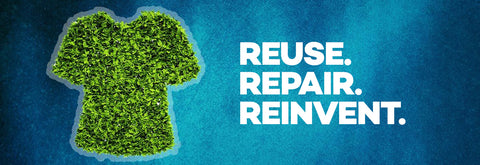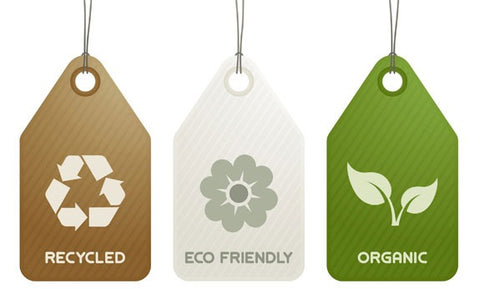
Thanks to climate change, sustainability is all the rage these days. It’s an undisputed fact that consumers have become more aware of the environmental consequences of their behavior. This awareness has pointed them in the direction of products that leave a minimal footprint on the environment.
Recently, a study was conducted in the USA, where people were asked about their views on shifting to a greener lifestyle.
More than 88% of the participants said that they would want to lead an eco-friendly lifestyle. And 55% out of those said that they are not sure about the sustainability quotient of the product.
Recommended Reading: Why Sustainable Fashion Matters?
Businesses have noticed this growing interest, and have already pounced on it. A simple Google search on “sustainable products” will return a vast array of results. But as far as the accuracy of those claims is concerned, there’s no way we can check for ourselves.
In other words, people are interested in buying eco-friendly products. But what makes them reconsider is uncertainty about the product.
It’s perfectly natural for consumers to be skeptical about new trends. Product reliability, quality, and cost are just a few factors that influence buying decisions. But with sustainable products, authenticity is often a big question mark.
It so happens to be the case often that a product that’s marketed as eco-friendly and sustainable is anything but that.
We live in a world that’s in dire need of genuinely sustainable products. Pseudo-sustainable products not only damage consumer trust but also degrade the environment.
How can a buyer differentiate between a genuinely green product and another that’s just claiming to be one?
Fortunately, there are a plethora of ways to identify an authentic, sustainable product. How do you ask? Scroll down to learn more.
Also Read: Fashion & Its Impact on the Environment
Features You Need To Know About

There are a few attributes of a sustainable product that are highlighted repeatedly by leading sustainability experts like Han Brezet and Martin Charter. These can be identified as the following:
- Resource of the raw materials used
- Manufacturing process
- Total cost
- Life cycle
- Use of Hazardous Substances
- Socio-economic impact
Let’s analyze each feature in detail to understand sustainable products better.
Resource of the raw materials used
The raw materials that are used to create a product come from a resource base. The management and utilization of those resources significantly impact the sustainability of a product.
Each type of raw material used has a variable impact on the environment. This is the reason why India has banned single-use plastic bags across the country. They take thousands of years to decompose, unlike cloth and jute bags that are much more eco-friendly.
When making a buying decision, it’s worth asking what the resource base is, and if the materials used are genuinely sustainable.
Bonus Tip: Organic vs Conventional Cotton
Manufacturing Process
The usage of eco-friendly raw materials alone is no indicator of a product being sustainable. The impact it can have on the environment goes beyond its construction and usage. The manner in which it’s manufactured also plays a vital role.

For example, it won’t do much good if you purchase a green product from a company that disposes its waste into local water bodies.
Many companies sell under the guise of sustainability while compounding the crisis it claims to avert. Be diligent enough to read up on who you’re planning to buy from and how they manufacture their products.
Total Cost
The price of a product doesn’t divulge the real cost of owning it. Waste disposal, loss of product, and health and safety regulations are some of the many hidden costs that come with any product.
From the perspective of sustainability, there are several other factors as well. Issues such as circularity (is the product designed for reuse), recycling compatibility, as well as the time it takes to decompose, are also relevant.
For a sustainable product to make economic sense to a buyer, it must be priced affordably.
Life Cycle Impact
Life cycle impact refers to quantifying a group of impact categories and resource flows across the product system.

This tool is essential to understanding how the product impacts the world around it. It gives an idea of waste generated, the amount of greenhouse gas emissions, and the type of energy created and consumed.
While it’s important to note that assessing the life cycle never tells the full story, it gives essential details on how it affects the environment.
Use of Hazardous Substances
While the total absence of hazardous substances would make sustainability much more comfortable to achieve, it’s still off in some ways. The fact is many product systems need to incorporate hazardous substances in their products (batteries, bulbs, and circuits, etc..)
It is necessary to assess how human, as well as environmental exposure to these substances, is managed. It’s vital to ensure that these substances can both be recovered as well as disposed of safely.
Socio-Economic Factors
Socio-economic factors include an umbrella of issues different from the ones mentioned earlier. These include labor rights, treatment and issues, fair allocation of revenues, and the employment of unethical practices (such as child labor).
The important thing here is to recognize whether the product’s impact on both society and the economy is factored in.
The socio-economic attributes of a product must be evaluated through the duration of its life-cycle to gain a better understanding of its sustainability quotient.
Conclusion
If you’ve made it this far, thank you for your commitment to being sustainable. While sustainability is a hot word these days, few truly understand what it means. We, at NorthMist, hope this post has provided you with valuable information on what a sustainable product is, and how you can ensure you’re buying the right products.
If you enjoyed reading this post, we’re sure you’ll find the others as informative. Visit our blog to learn more.
To learn more about Northmist’s organic clothing revolution and how you can become part of it, get in touch with us.





